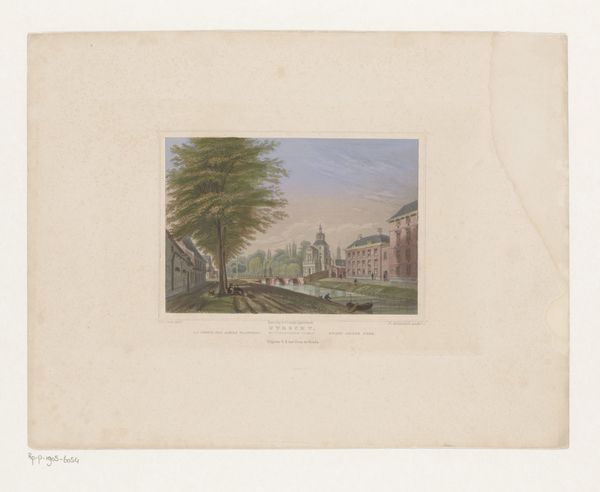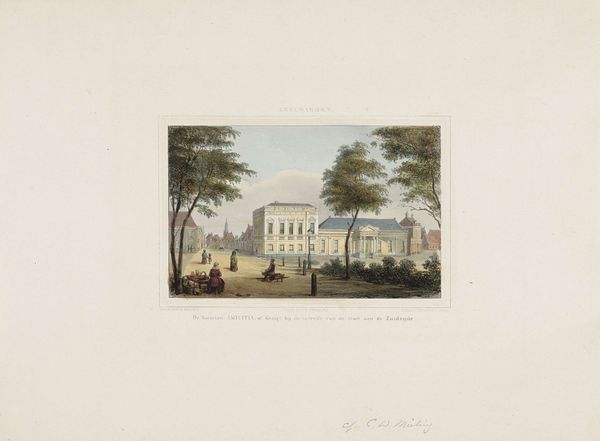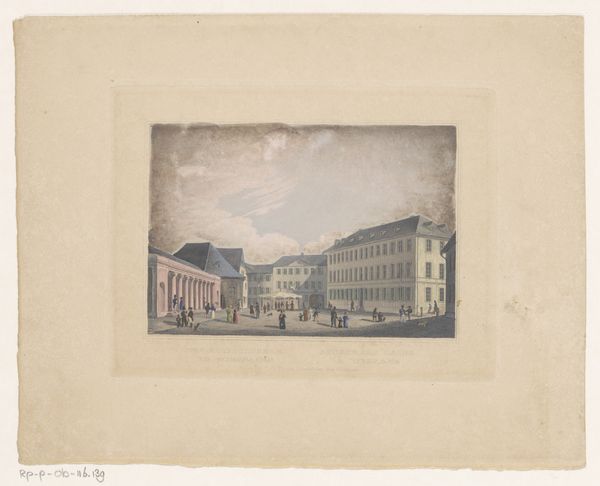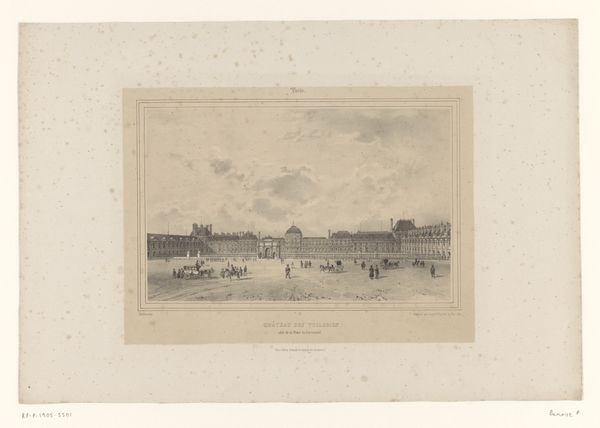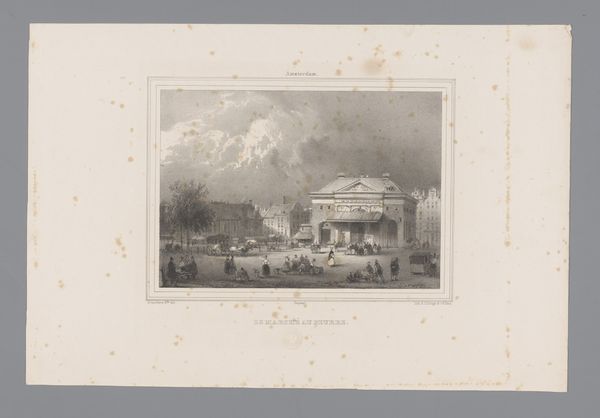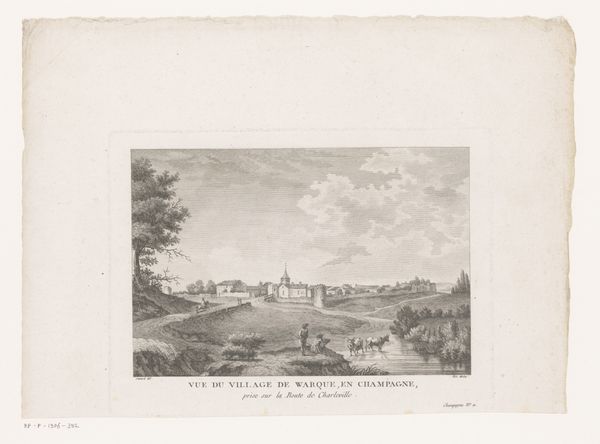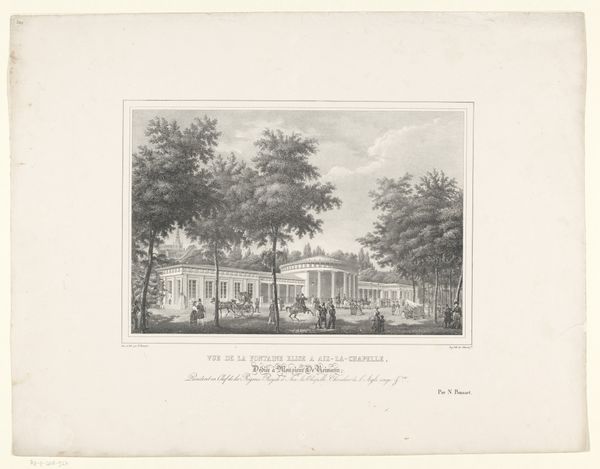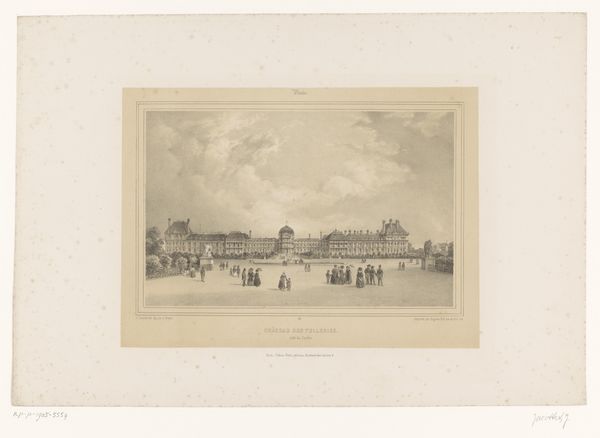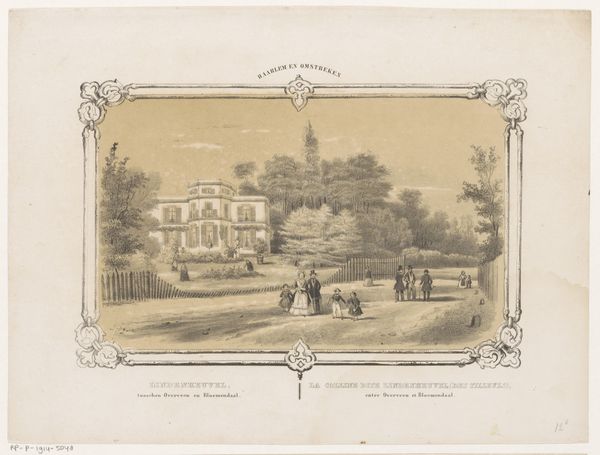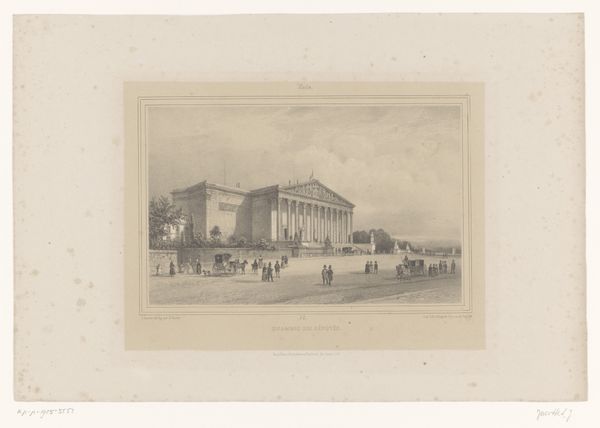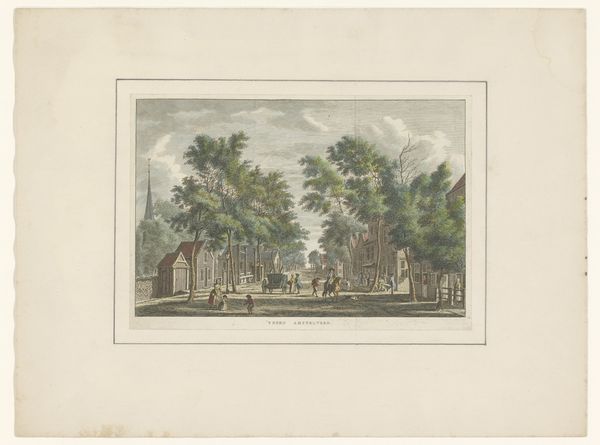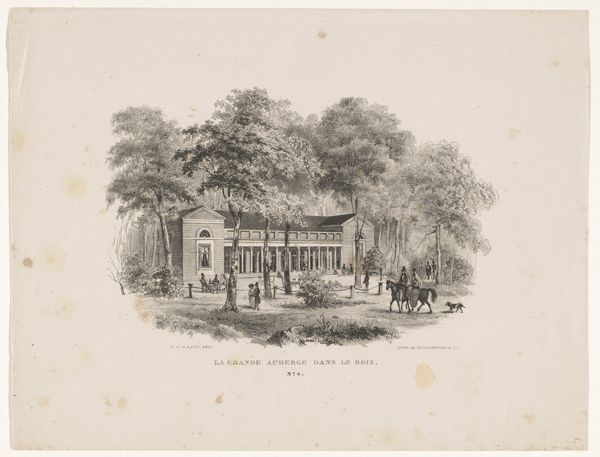
watercolor
#
light coloured
#
landscape
#
watercolor
#
romanticism
#
cityscape
#
watercolour illustration
#
watercolor
Dimensions: height 108 mm, width 148 mm
Copyright: Rijks Museum: Open Domain
This print, "Gezicht op het Kurhaus bij Wiesbaden," was made by Ernst Grünewald, likely in the first half of the 19th century. It's an engraving, a process that involves meticulously cutting lines into a metal plate, inking it, and then pressing paper against it. The effect here is quite delicate, despite the industrial nature of printmaking itself. Note how the architectural elements of the Kurhaus and the figures populating the scene are rendered with precision, giving a sense of the ordered leisure enjoyed by the wealthy. The repetitive nature of engraving suits the subject matter: a place of leisure intended for the wealthy, who are depicted in leisurely activity. The production of such prints relied on a division of labor, from the artist to the engraver to the printer. This points to the wider context of capitalist production, in which specialized skills contributed to the creation and distribution of images like this one. Ultimately, understanding the process of engraving helps us appreciate the social and economic forces at play in creating and consuming art in the 19th century. It blurs the lines between art, craft, and industry.
Comments
No comments
Be the first to comment and join the conversation on the ultimate creative platform.
